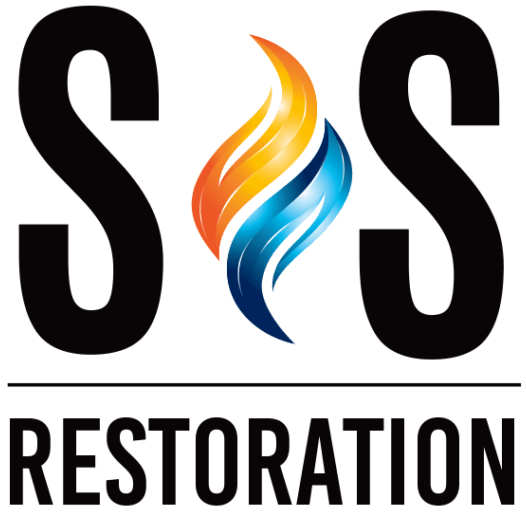
Wildfire season occurs almost year round in California, however the spring, summer, and early fall seasons see the highest risk of wildfire. Wildfires can be sparked by a weather event such as lightning strike or high wind knocking down power lines, or they can be intentionally set by man. However, regardless of how they start, they can cause acres of devastation. Although wildfire season is a force of nature to be reckoned with, there are still precautions you can take to protect your property from fire damage.
Identifying the Main Threats
Research has shown that the biggest threat to structures in and around wildfires are the embers and small flames that can be carried by the wind for miles. Embers are pieces of wood or vegetation that has been ignited and becomes airborne. With the Santa Ana winds occurring often during wildfire season in California, embers can be carried over a mile away from the burn site and ignite homes and buildings that may not be suspecting it. Being in the direct line of a wildfire is obviously a high risk for property damage, you can also be at risk in “safe” zones nearby.
Understanding the Home Ignition Zone
The home ignition zone (HIZ) was developed by Jack Cohen, a retired USDA Forest Service fire scientist, in the 1990s through his research into how homes ignite and the effects of radiant heat. There are three main zones: the immediate zone, intermediate zone, and the extended zone. The immediate zone is the space within 5 feet of the building, the intermediate zone is the next 5-30 feet out from there, and the extended zone is located 30-100 feet out from the building but can extend 200 feet out. The goal of using a HIZ method for fire prevention during wildfire season is to start at the building, and work your way out. Whether the building is your home or a commercial building, you should protect your property the same.
Immediate Zone Preparation
The immediate zone includes your home and the 5 foot perimeter. Fire prevention maintenance to consider within the immediate zone include:
- Cleaning the roof and gutter of dried leaves and debris – especially pine needles and branches
- Roof repairs to prevent embers from reaching the under layer
- Clear out attic vents and close them or install a metal screen to prevent embers from entering the attic
- Repair any window screens that are loose or deteriorating and remove debris from window sills and patios
- Maintain any flammable cosmetic features around the home – including plants, trees, firewood piles, umbrellas, or wooden patio furniture
The goal of immediate zone preparation is to avoid anything close to the building from catching fire within close proximity of your property. If there’s nothing to feed the embers, they will die out and not ignite.
Maintain the Intermediate Zone
The next 25 feet of your property is the intermediate zone, and often includes yards, parking spaces, and landscaping. The goal is to prevent a wildfire from crossing into the immediate zone, cutting it off before it can get too close. Action items to consider within the intermediate zone include:
- Clearing any excess or overgrown vegetation from the yard and around any utilities – propane tanks, powerlines, water meters, etc.
- Create built in fire breaks by placing your driveway, walkways, and concrete patios in strategic locations near your property
- Keep lawns, trees, and vegetation from getting too overgrown to prevent widespread fire outbreak
- Ensure there is at least 18 feet between large trees and avoid planting them too close to your home or building
The biggest risk within the intermediate zone is landscaping, dry trees and plants can ignite instantly from just one ember landing on it. Maintain your outdoor space year-round to ensure it is as least flammable as possible.
First Line of Defense: Extended Zone
The extended zone is the first line of defense against encroaching fire. As the furthest space from your property, the extended zone can be used to interrupt a wildfire’s path and prevent the spread of a smaller fire sparked by embers from expanding. In the extended zone, you should:
- Maintain any litter or debris on the ground – including any dead plants
- Clear out any vegetation or flammable materials that are near sheds, garages, or other additional structures
- Trim tree branches to at least 10 feet above the ground to prevent easy ignition from the ground
You Can’t Prevent Nature
You cannot predict when a fire is going to start during wildfire season, but proactive fire prevention can make a significant difference on the outcome. Only so much can be done to prevent fire damage, and sometimes you have to evacuate before you can put protections in place. If your home or commercial building has been damaged by a fire, contact S&S Restoration. Our fire restoration services are available 24/7 and we can handle everything from assessment, to clean up, reconstruction, and finishing touches. Don’t try to DIY your restoration, call a professional and rest easy knowing that your property will be restored to better than before.
About S&S Restoration
S&S Restoration is a Temecula, California restoration company that specializes in both residential and commercial buildings affected by fire, flooding, mold, and storms. We proudly serve the Inland Empire, San Diego, High Desert, and San Bernardino County areas. Give us a call at (800) 608-8447 or visit our website at ssrestorationinc.com, we’re available 24/7 for emergency response to guarantee the best outcomes.
